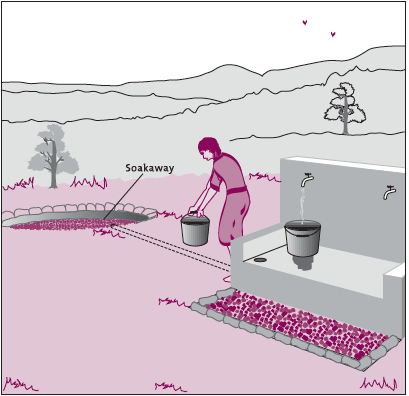Public standpost
A public standpost or tapstand distributes water from one or more taps to many users. Because it is used by many people it is often not looked after, and the design and construction must be sturdier than used in similar domestic connections. A standpost includes a service connection to the supplying water pipeline, a supporting column or wall made of wood, brick, dry stone masonry, concrete, etc, and one or more 0.5 inch (1.25 cm) taps that protrude far enough from the column or wall to make it easy to fill the water containers. The taps can be a globe or a self-closing type.
The residual pressure head of the water at the standpost should be 10–30m, and some standposts have a regulating valve in the connection to the mains that can be set and locked to limit the maximum flow. A water meter may also be included (see Fact Sheet 7.8 Domestic water meters). A solid stone or concrete apron under the taps, and a drainage system, lead spilled water away and prevent muddy pools from forming. A fence may be needed to keep cattle away. The location and design of a public standpost should be determined in close cooperation with future users.

